Kraków 2010-08-28
Construction
180 Section 1961-09-29.
OKB Mikojan and Guriewicz MiG-21 F-13.
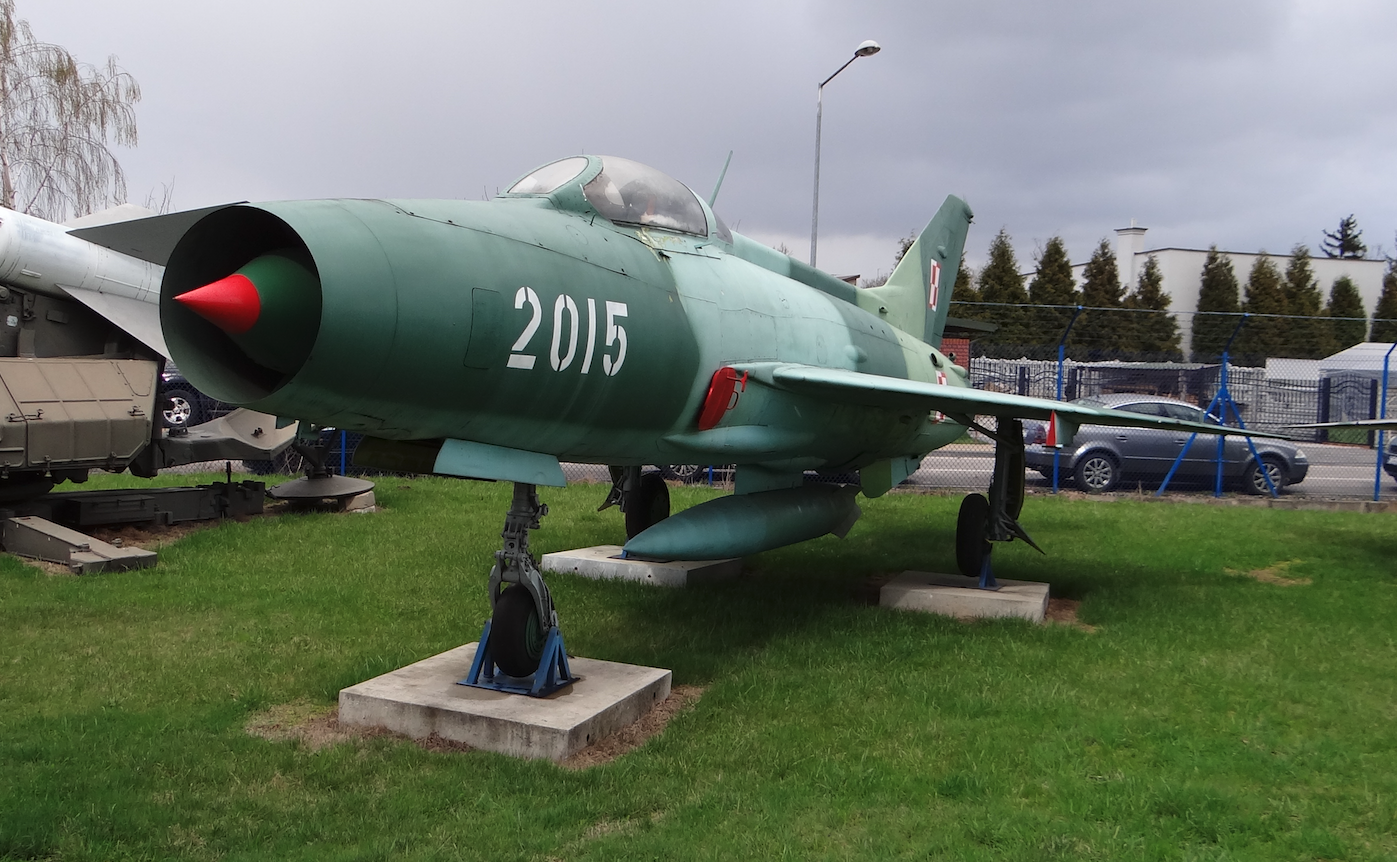

Construction E-6, MiG-21 F.
The "Delta" wing with bevelled ends (0.3 m), slant 57 degrees, total area 23 m2, symmetrical wing profile CAGI S-12, with a relative thickness of 4.2% at the base and 5% at the end, wedging 0 degrees, elevation -2 degrees, chord at the base 5.97 m, at the end 0.46 m. The structure is the main, auxiliary, front and rear girder. Covering 1.5 to 2.5 mm thick. There are two fuel tanks in each wing. Under the wings 2 points for attaching armament. The wings are equipped with ailerons, with a total area of 1.18 m2, which are swinging at +/- 20 degrees. The 1.84 m2 flaps are swung 25 degrees to take off and 45 degrees to land.
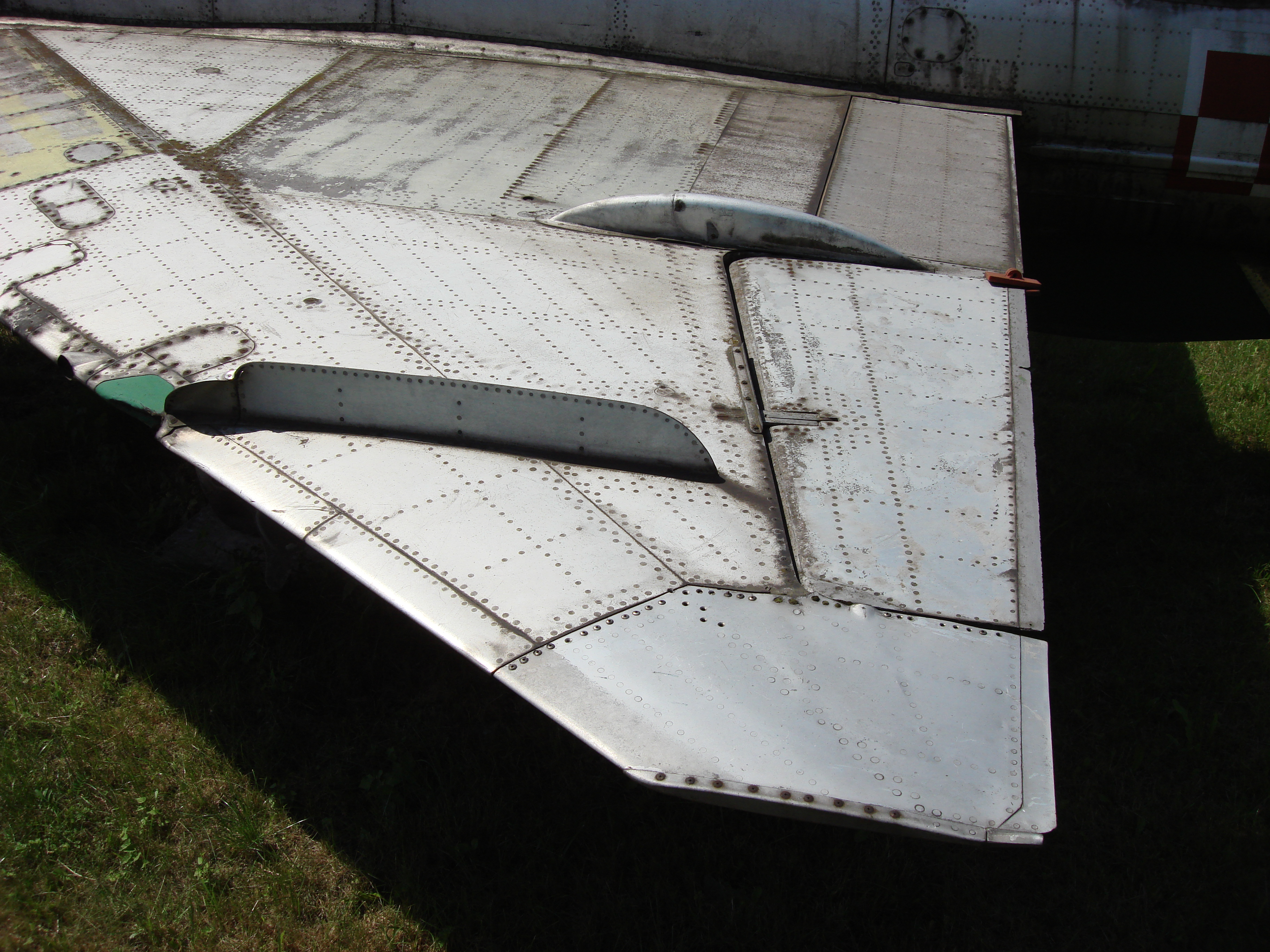
The slender fuselage. It begins with a frontal supersonic air grip, centrally equipped with a cone. The cone is movable along the axis and can automatically occupy one of three positions. The cabin protrudes from the hull outline. One-piece cab cover. It consists of two windows. Front flat window with bulletproof glass. The rest is made of organic glass in one piece. The rear part of the cabin cover, behind the pilot's seat, also has a window. The cabin and the horizontal tail are connected by a superstructure hiding the aircraft installation. On the fuselage near the tail there are two pairs of air holds for cooling the engine in its rear part, where there is an afterburner. In the rear part of the hull under the discharge nozzle a braking parachute was placed in the glove box.
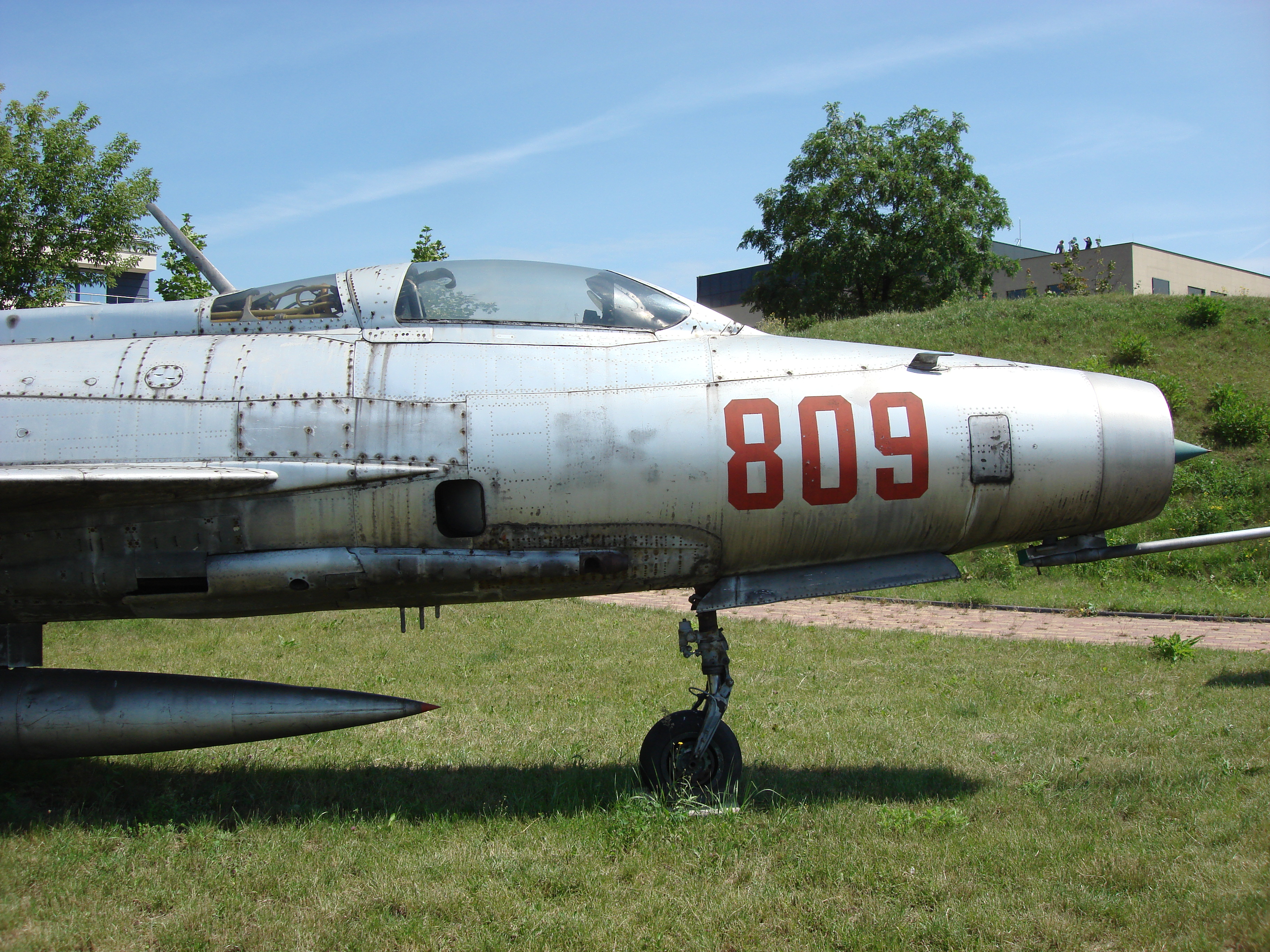
Vertical formation, with a 55-degree slope, divided into rudder and ballast. Horizontal slab, with an angle of 55 degrees, mounted in the plane of the wings. It has anti-flutter masses at the ends. The vertical arrangement is complemented by one under-fuselage aerodynamic steering wheel.

Three-support chassis, all wheels single. The front landing gear retracts forward into the hull. The main landing gear is supported, the wings and shin retract into the wings, but the wheels rotate 90 (88) degrees relative to the shin and hide in the fuselage vertically. The chassis base is 4.81 m, and the main chassis wheel track is 2.69 m.

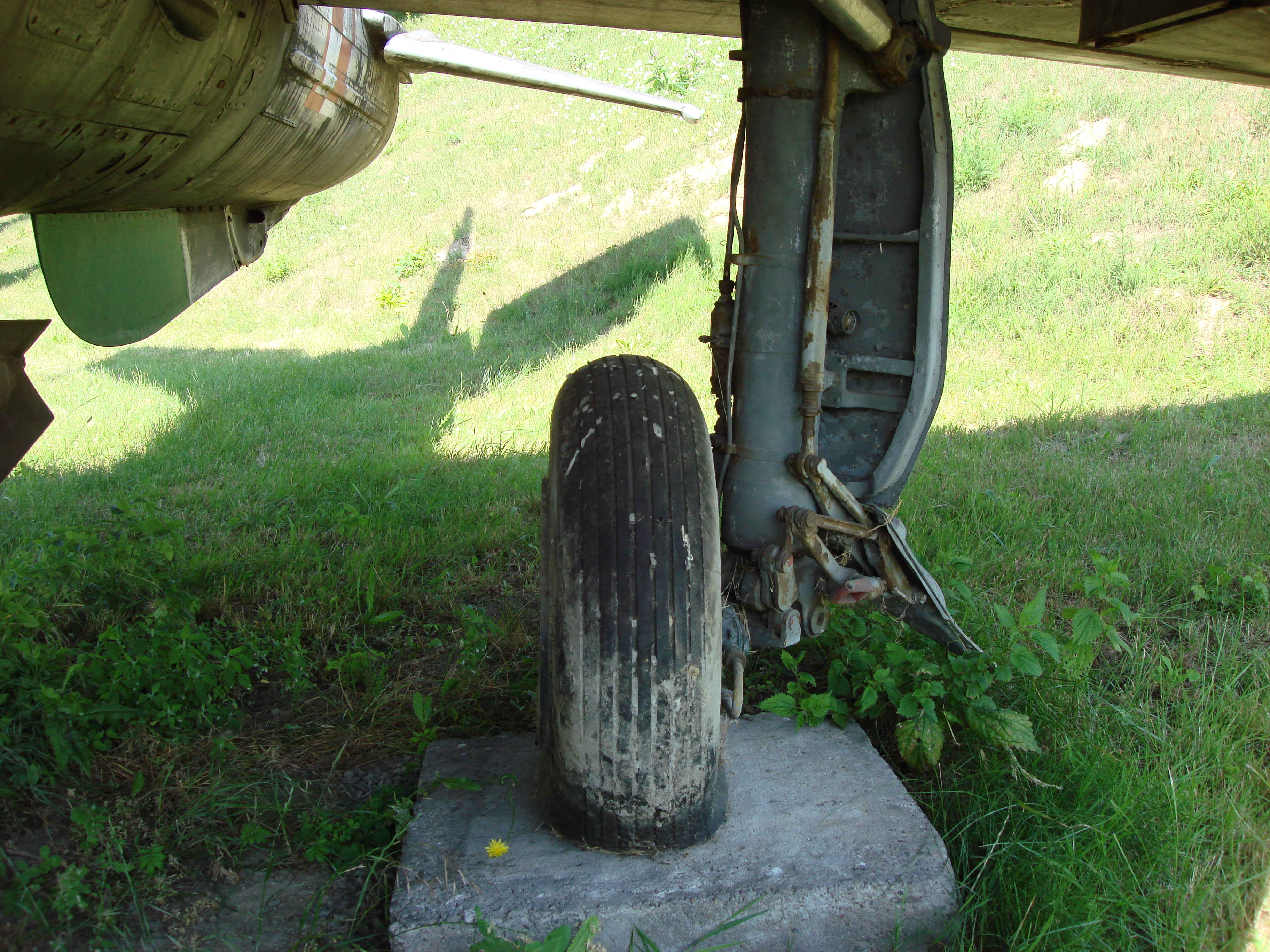
MiG-21 F-13 power unit.
The drive unit consists of a double-shaft turbine AM-11 F (R-11 F-300) with a thrust of 1 x 3 800 kG. The engine is structurally built as a single-flow, two-shaft, with an adjustable nozzle. The engine consists of a 3-stage compressor for the first shaft, a 3-stage compressor for the second shaft, a combustion chamber, 1-stage turbine for the second shaft, 1-stage turbine for the first shaft, afterburner chamber and an adjustable discharge nozzle.
The box for oil aggregates and systems is located under the engine. Two pumps supply fuel to the engine. The first feeds the combustion chamber, the second supplies the afterburner. The engine is started by means of a current-starter, which works as a generator after starting the engine. Approximate fuel consumption; 0.9 kg fuel / kg / 1 hour without afterburning and 2.4 kg fuel / kg / 1 hour with afterburning. Engine length about 4.5 m, diameter less than 1.0 m, weight about 1 200 kg. The period between engine overhauls is 300 hours of flight.
Fuel in the fuselage in 3 tanks and in the wings in 4 tanks. 2,500 liter capacity. An additional tank under the fuselage with a capacity of 490 liters.
Air to the engine is supplied through a front air grip equipped with a cone. The cone is movable along the axis and can automatically occupy one of three positions. This is a way to regulate the amount of air taken and its pressure in the intake duct. On this cone, oblique shock waves are generated in the supersonic flight. One of their effects is the loss of air velocity to subsonic velocity. This is necessary because the engine compressor operates at subsonic air speed. Immediately behind the cone, the air channel bifurcates past the cab on the sides to connect just before the engine. The air duct is equipped with two sets of vent-flaps. The first set is on the sides just behind the air grip, the second at the height of the pilot's cabin. Their task is to prevent engine pumping. Pumping is an undesirable phenomenon that leads to stalling of the engine and even its damage. In a word, the axial movement of the cone and the flap-vent ensure the optimal operation of the engine compressor, whether on the ground or in the air without the participation of a pilot.
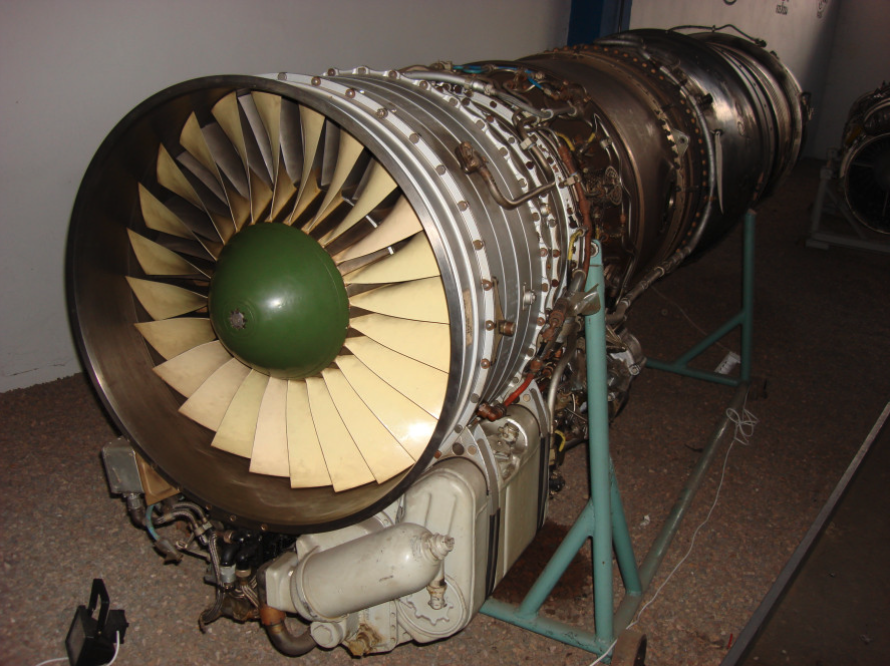

Rescue system in MiG-21 F-13.
The plane uses a SK reclining chair. It allows rescue from a height of 0 m, but the aircraft must have a progressive speed of about 120 km / h. During catapulting, the opening fairing of the cabin protects the pilot against sudden air pressure. The rescue parachute was placed in the back of the chair.
MiG-21 F-13 equipment.
Equipment; ASP-5 ND optical sight coupled with SRD-5 Quantum radio rangefinder and SIW-52 infrared viewfinder. For reconnaissance flights, instead of the reflector in the left wing, you can take the camera A-39. RW-UM radio altimeter. The SOD-57 M active response device. Other radiotechnical devices are: R-802 W, SRO-2, SPO-2, ARK-10, MRP-56 P.
Armament MiG-21 F-13.
The MiG-21 F-13 version has one cannon (right), NR-30, 30 mm, as permanent armament. The gun was placed in the front right lower part of the hull slightly behind the cabin. It protrudes slightly from the hull outline. Because the plane during the design was to be armed with two symmetrically placed cannons, therefore a fairing remained on the left. The 30 mm NR-30 cannon is the top of single-barrel cannons with one cartridge chamber. The constructors were A. Nudelman and A. Richter. It was adopted for armament in 1955. and became part of the MiG-19/21 F, Su-7/17/20/22 aircraft. The cannon has a gas resistor instead of, for example, a hydraulic spring one. The operation of the plot is based on the principle of using the recoil energy of the barrel assembly to unlock and recoil the locking assembly, and on the principle of using the energy of gunpowder gases discharged from the barrel to the gas resistance repeater, to recoil braking and to return the barrel. There is a short barrel movement in the cannon, the bolt assembly recoil is greater than the barrel assembly recoil, the barrel cable is unlocked during recoil. During the recoil of the barrel with the castle chamber, the accelerator and reference work. Cartridge feeding mechanism is two-sided and two-act. In a two-stroke system, the cartridge belt moves both when recoil and when the moving parts of the weapon return. The turret is overloaded with compressed air. The shot is done using an electro-trigger. Basic plot data is; mass 66.5 kg, rate of fire 850 - 900 shots / minute, initial speed of the projectile 780 m / s, the cartridge weighs 0.84 kg, and the projectile itself 0.41 kg. The rate of fire of the plot is not impressive, but the projectile easily destroys the wing girder.
Heavy beams can be suspended on two beams under the wings. S-21 or S-24; storage tanks, e.g. UB-16-57 U; bombs up to 500 kg. But above all, the fighter takes 2 CCP. K-13, as described below.
The sub-fuselage node is used to collect an additional fuel tank, with a capacity of 490 liters.
Volatile properties of the MiG-21 F-13.
The F-13 version belonged to the lightest of the whole family. The main reason was the lack of radar sight. Thanks to this, he was able to achieve very high dynamic ceilings. It was possible to reach a height of 24,000 m. After losing the instrument speed, the aircraft lowered its nose and went down. Our pilots performed such flights during so-called technical flights. During these flights, an exercise was also carried out - a flight to reach the maximum practical ceiling. After take-off, elevation to the ceiling of about 11,000 m was made. Then, in a horizontal flight, the aircraft was accelerated to Ma-1,3 with afterburning. Further acceleration to Ma-1.7 with a climb of 10 degrees. Intake height up to 15,000 - 15,500 m with a 10-25 degree climb. Further acceleration to Ma-1.85-1.9 and hill at an angle of 15-20 degrees at decreasing speed (Ma-1.7-1.6). Horizontal flight on a ceiling of about 19,500 m. Then the pilot turned off the afterburning, released the air brakes and went down. The whole flight lasted up to 30 minutes. For safety reasons, when there were 800 liters of fuel remaining in the tanks, you had to turn off the afterburner and stop the task. This also sometimes affected the unreachable planned ceiling. Success usually lay in the pilot's skills and experience. It should be added that there is no air maneuvering on the 19,000 m ceiling. You could only make a straight line attack. The problem in the stratosphere has always been the high inertia of the aircraft due to the low efficiency of the aerodynamic controls. The plane turned like a slow dance. However, this was not a problem, because the aircraft of the opponents behaved identically.
Landing on F-13 was made from a high incident. After the fourth turn on the landing course, a speed of 600 km / h. Descent from 3,000 to 2,700 m (with a descent of 5-10 m / s). Braking up to 500 km / h. On the horizontal section, the flaps and the chassis slide out. Descending to 2,000 (with a descent of 40 m / s). To the threshold of about 30 km. Descent to 1,000 m (with a descent of 15 m / s). To the threshold of 20 km. Descent to 500 m (with a descent of 10 m / s). To the threshold of 15 km. Descent 200 m (with a descent of 5 m / s). Braking up to 450 km / h and horizontal flight. At the ceiling of 200 m full flaps. Braking to 330-320 km / h. Leveling at 8-10 m. Grounding.
Combat tactics MiG-21 F-13.
The MiG-21 F-13 aircraft was a dangerous opponent operating in the OPK system. Its effectiveness was first determined by soldiers serving in command and guidance points. It was from the command post that the pilot received an order to start, course, and take the appropriate ceiling. Usually the duty couple started the task of identifying and intercepting an unknown air target. Guidance was carried out visually and phonically, via a radio, giving the pilots appropriate predetermined commands. It took place from the start to the exit of the fighter jet into the rear hemisphere of the target at an effective detection distance. In "combat" flights, it was a distance of several kilometers, so that you can immediately capture the target and attack it. In school flights this distance was about 20 km. At unidentified objects, one of the pilots had to perform target identification. In school flights, when the target was intercepted on a given border, there was talk of tactical interception. When this condition was not met, there was talk of a technical interception. To make an effective attack, the pilot had to make eye contact with the target, i.e. everything depended on the time of day and night and atmospheric conditions. In the attack, the pilot used the ASP-5 ND optical sight coupled with the SRD-5 Kwant radio rangefinder, i.e. another type of crosshair used on previous MiG-17 / Lim-5 fighters. I do not mention the MiG-19 fighter here, because only varieties with a radar sight were used in Poland. The radio rangefinder reported the actual distance to the target. Very important when launching a missile or series from a cannon. The aiming system in the MiG-21 F-13 was supplemented by the SIW-52 infrared viewfinder, which increased the chances of an effective attack, especially at night.
The operation of the MiG-21 F-13 and all subsequent versions without any help from the ground was very limited. First of all, the operating radius was not too big, but without exaggeration, because nowadays many think that the machine could only work near the airport. The second reason was the ownership of weapons and navigation systems. The MiG-21 F-13 has a cannon, i.e. the action of "free hunting" with visual detection of the target was as possible and permissible as possible. Generally speaking, the so-called fight could happen.
Guided missile K-13 / R-3.
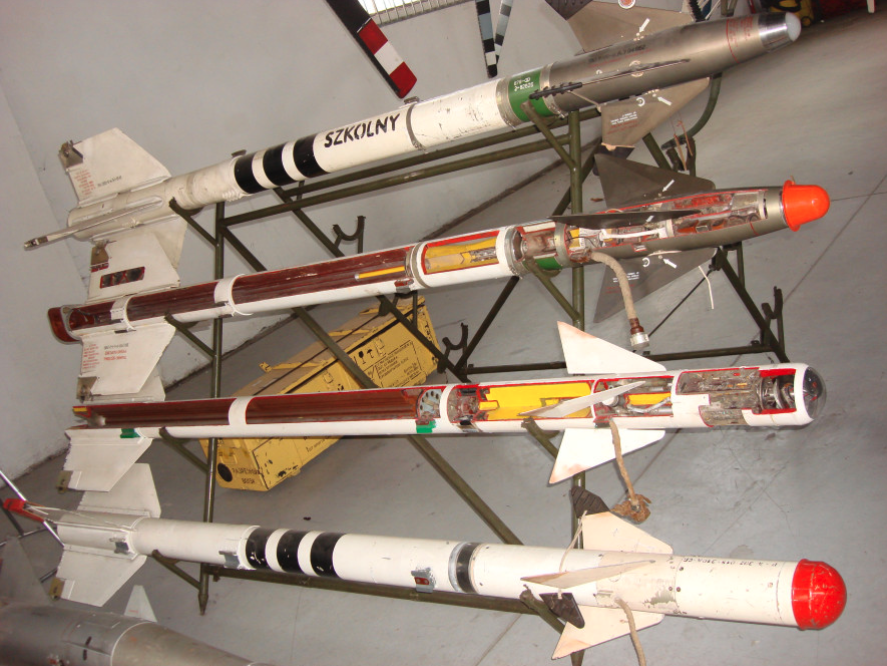
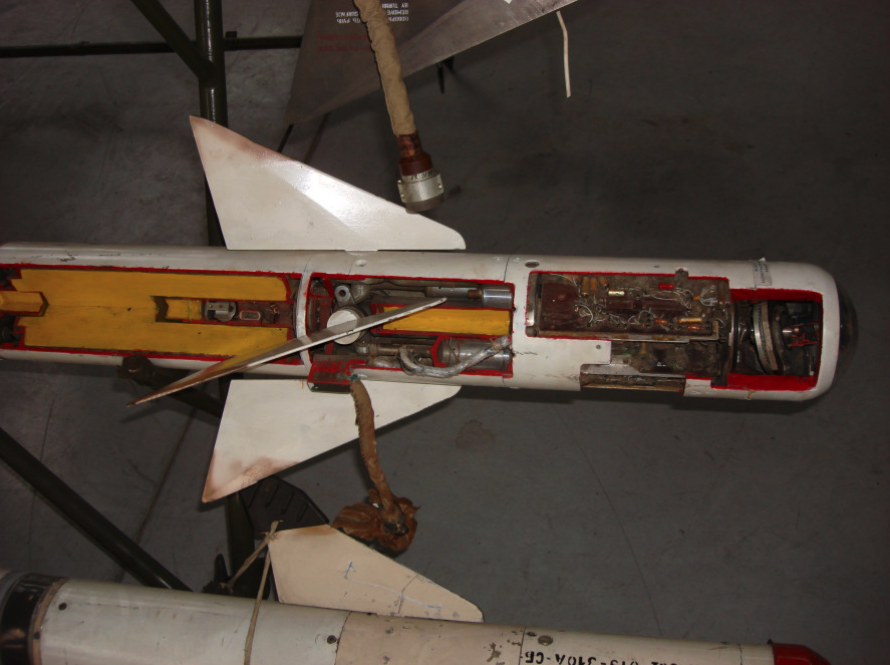
The basic weapon of the MiG-21 F-13 fighter was the CCP. (guided missile) K-13, so here we'll give him some attention. American CCP type AIM-9 was a revelation at that time. By the end of the 1950s, the Russians had accumulated so many parts, components and plans for the American AIM-9 B Sidewinder missile that they were able to copy, especially the steering system. The Russians have made some minor changes. For example, they increased the amount of explosive charge. Serial production began and in 1960, the missile was adopted for armament. It was decided to combine the MiG-21 F fighter with two K-13 missiles, and this is how the MiG-21 F-13 version purchased by Poland was created.
The K-13 missile makes it possible to combat air objects from the rear hemisphere distinguished by thermal contrast. This is possible thanks to the thermal self-guiding head (TGS). Interception of the object by TGS is signaled by a sound signal in the pilot's headphones and a light signal on the weapon control panel. The missile can also be fired to ground and surface objects.
The basic data of the K-13 missile is; length 2.84 m, hull diameter 0.127 m, span 0.53 m, mass 75 kg, mass of explosive charge 11.3 kg, maximum range 8 km. The missile is built in the layout of a duck, i.e. the wings at the back are the tail at the front. It has an optical proximity and mechanical impact fuse. If after firing within 59 seconds none of the detonators work, then the projectile self-eliminates. The missile drives the rocket engine on solid propellant. The gyro placed in the wing tips ensure stabilization of the missile during the flight.
The K-13 missile launches an infrared sensor. Behind him is the electronic compartment. Further, the tail control executive system. The creature moves in pairs, i.e. it is vertical and horizontal. In short, the projectile goes to the target in the cross (+) system, and not like it is suspended under the beam in the x system. The projectile does not rotate, as usual, non-guided missiles do. In the region of the tail there is also a connector through which the missile is connected to the aircraft and its systems. At the moment of firing the connector is broken. Next is the explosive, followed by the propellant of the rocket engine.
After some time, the K-13 shells received the designation in serial production R-3. In the next, most popular version, the missile was designated R-3 S / K-13 A. The powder pressure accumulator was modernized, thanks to which the operating time of the control system increased from 11 seconds to 21 seconds.
Based on this version, several varieties were created, including a missile-target. The R-3 M version has an increased range of up to 12 km, and the R-3 MT version has a range of 15 km. The novelty was the use of cooling the TGS detector with liquid nitrogen while the projectile was still on the launcher. A radio proximity fuse and an explosive charge surrounded by shrapnel cutting bars were also used.
The R-3 U school missile is not fired from the launcher, but the on-board apparatus records the capture parameters and allows the pilot's attack to be assessed. As a curiosity, it can be argued that in the 70 / 80s the price of one R-3 missile was equal to the price of a small passenger car (Fiat 126p).
Data T-T MiG-21 F-13:
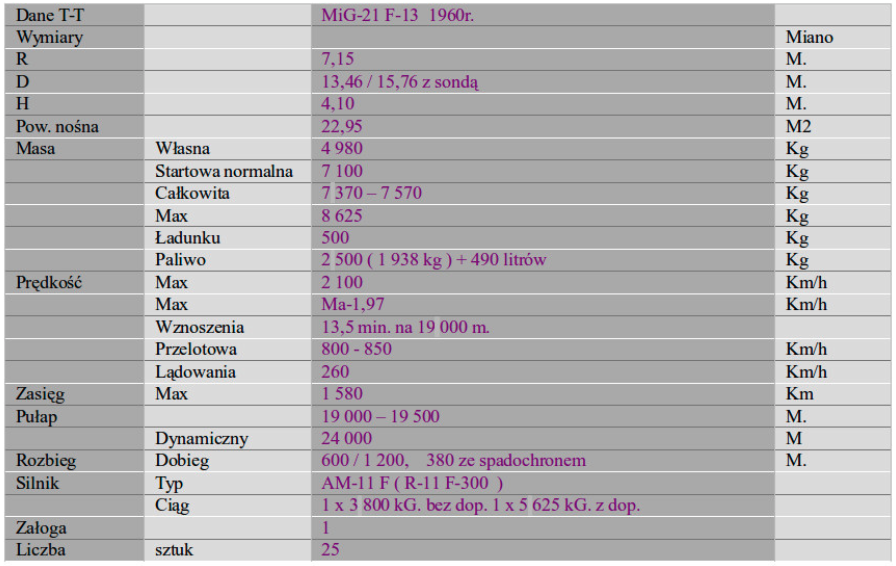
Written by Karol Placha Hetman
